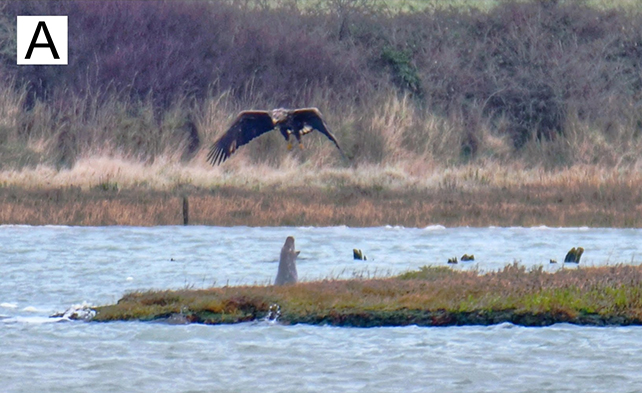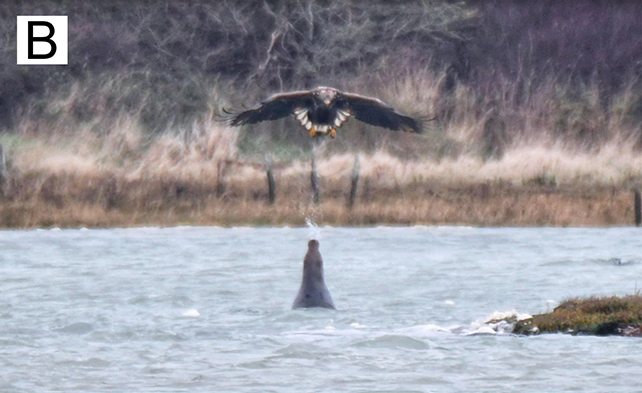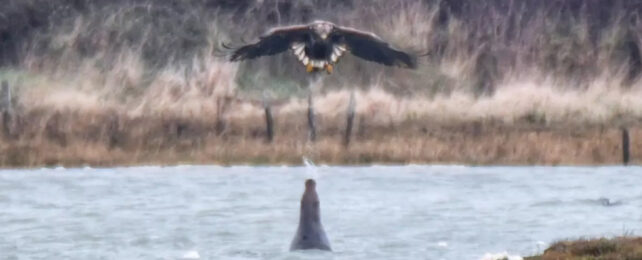The only certainty about the natural world is that it's always surprising. Experts are reporting what they say is a unique interaction between a grey seal (Halichoerus grypus) and a sea eagle (Haliaeetus albicilla) that has never been caught on camera before – and the dealing wasn't friendly at all.
Bird watcher Clare Jacobs captured photos of the encounter while out walking around Newtown Harbour on the Isle of Wight with her daughter Megan, a paleontologist from the University of Portsmouth in the UK.
The mother and daughter saw the sea eagle (also known as a white-tailed eagle) swooping towards the water at high tide. As it approached the water, an adult grey seal appeared from the depths, barking at the bird and then spitting a stream of water in its direction.

Both Clare and Megan Jacobs, together with paleontologist David Martill from the University of Portsmouth, have written up a paper on the spat. They think the seal might have been trying to drive the eagle away as a way of defending the prey that they're both after: the fish in the water.
"Sightings of grey seals and white-tailed eagles are frequent events now on the Isle of Wight, but interactions between these two species have so far not been reported," says Meghan.
"This is the first record of an interaction between these two top predators and the first report of grey seals using spitting as a means of defense or deterrence against an aerial foe."

Spitting isn't all that common in vertebrates. It's most commonly seen in humans, camels, llamas, and alpacas, as well as some species of snake and fish. Here, it seems to have been the best form of defense for the grey seal.
These seals are relatively large, and can grow more than 2 meters (6.6 feet) in length. They usually feed on sand eels, whiting, cod, herring, and salmon smolt – and that puts them in direct competition for food with the sea eagles, which eat a variety of fish and waterfowl.
As for the eagles, they're the largest species in Europe, with wingspans up to 2.37 meters (7.8 feet). Having become extinct on the Isle of Wight in 1780, they were reintroduced by conservationists in 2019. We can assume that the grey seals, at least, aren't too happy about it.
The encounter is an incredible moment to capture on camera, and a reminder of all the interactions in the animal kingdom that we don't yet know about. It also highlights how quickly wildlife can adapt to new neighbors – in whatever kind of way.
"I'm always thrilled to catch photos of the eagles," says Clare Jacobs. "But catching such a rare and never before seen interaction made my year!"
The paper has been published in the Isle of Wight Natural History and Archaeological Society journal.
